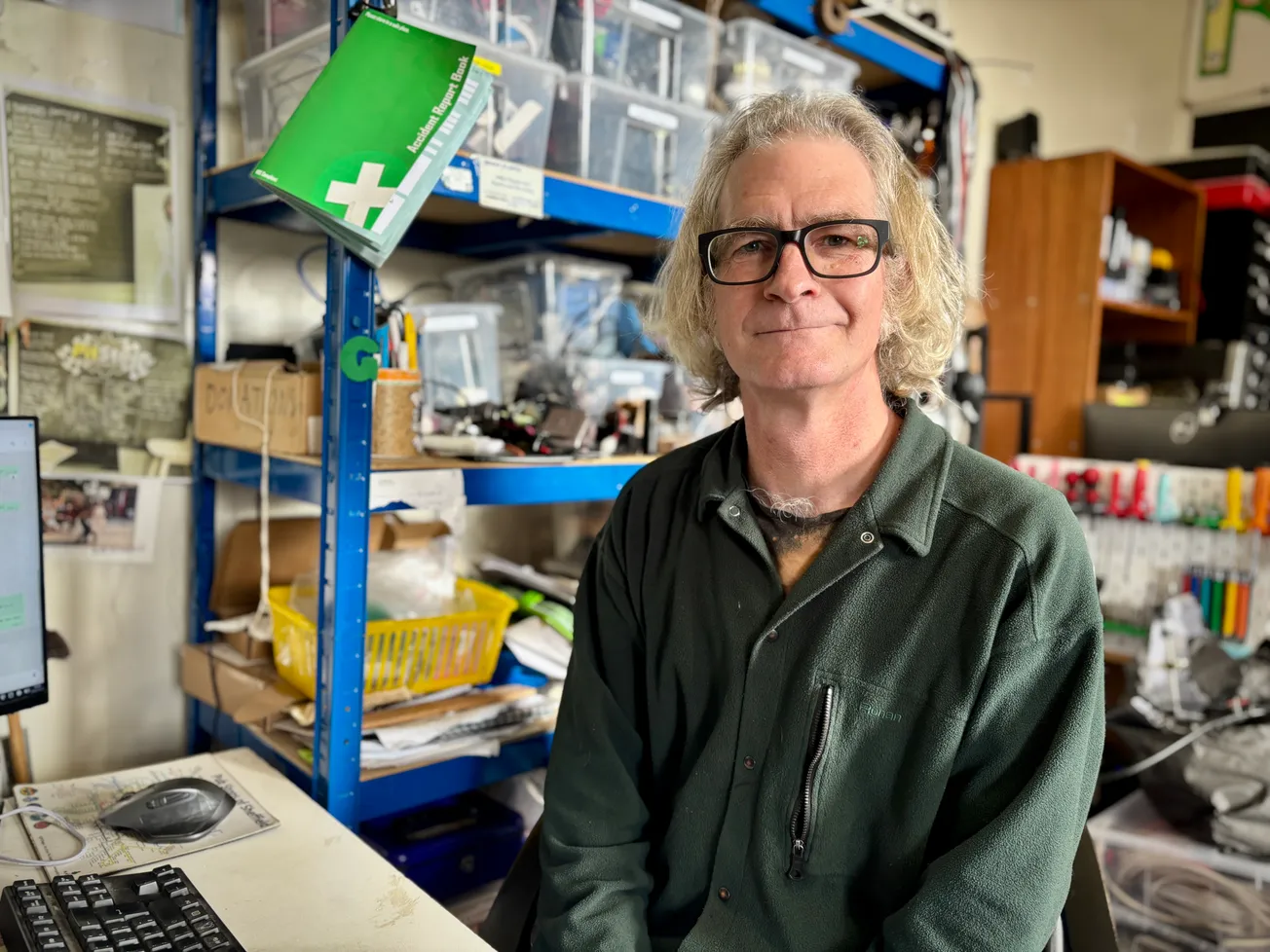Good morning members — and welcome to Thursday’s newsletter.
First of all, we promised you a story today about the future of the Old Town Hall. However, that story is going to take a few more days to finish off so we’re bringing you something else today instead.
This one is also set in Castlegate, but looks at the life and career of Pablo Fanque, a Victorian circus proprietor who lived and worked in Sheffield in the mid-19th century. He was one of the only successful black businessmen of his time but is now mainly remembered as a lyric in a pop song. Before that, we have a mini-briefing of news and recommendations for you as well.
Mini-briefing
- The biggest news in Sheffield this week is undoubtedly the nationalisation of Forgemasters. The firm, which employs just over 600 workers in the city, was taken into public ownership yesterday in a £2.6m deal. Forgemasters is one of the last remaining and oldest steel manufacturers in Sheffield but has struggled in recent years due to competition from cheap foreign imports. The firm provides essential parts to Royal Navy ships and submarines, prompting the Ministry of Defence to step in to secure its long-term future. But the government say the eventual aim is to return it to the private sector.
- This great long read from Now Then examines the legacy of Sheffield’s Anvil cinema. The Anvil was set up in the 1980s by the city’s staunchly left-wing council as a venue where cinemagoers could see both Hollywood films and more adventurous film programming. Based on Charter Square, it only survived for seven years between 1983-1990, but paved the way for Sheffield’s much-loved Showroom cinema, which still stands today. The piece also contains a reference to Sergio Bustamante (who featured in our recent members piece on the Chilean mural) who designed the early programmes.
- The Sunday Times Magazine was in Sheffield last week to examine the British obsession with booze. People are now flocking back to the city centre in their droves as Covid restrictions are finally lifted after 18 long months. Reporter Josh Glancy visited pubs and bars on West Street and Division Street and found drinkers eager to get back to enjoying themselves again after the seemingly endless coronavirus lockdowns. But the piece also looks at the costs of our culture’s love affair with alcohol, which are too often counted in serious illnesses, injuries and crime.
- On Friday, July 30, Sheffield-based poet and author Helen Mort will host a free “interactive lunchtime walk” featuring live readings of some of her poems in Endcliffe Park. “Poems by the Porter” is one hour long and will begin at 1pm at the park’s Queen Victoria monument. The walk is suitable for all ages and accessible for buggies and wheelchairs but participants are encouraged to dress for the weather. The readings will also be recorded so those unable to attend in person can join in too. Book at Sheffield Libraries’ Eventbrite website here.
For the benefit of Mr. Kite, there will be a show tonight on trampoline
The Hendersons will all be there, late of Pablo Fanque’s Fair, what a scene
Over men and horses, hoops and garters, lastly through a hogshead of real fire
In this way Mr. K. will challenge the world!
I must have heard these lines a thousand times. First as a child, sardined in the back of the family car as Sgt. Pepper’s Lonely Hearts Club Band played; music’s infinite possibilities dawning on me as we navigated the country lanes of Cornwall. Much later, as an 18-year-old who hoped his band would be bigger than The Beatles, “Being for the Benefit of Mr. Kite!” provided a tantalising glimpse of the kind of sonic experimentation that could be done in a recording studio, if only we could get there.
Despite this song soundtracking many of my younger years (and some of the older ones, too), I didn’t know that the names in the lyrics referred to real people. Mr Kite, the Hendersons and Pablo Fanque were all circus performers during the art’s Victorian golden age. They appeared together hundreds of times in the mid-19th century, before music halls and movie theatres took over. Mr. Kite was head-balancer William Kite, while the Hendersons were a husband and wife team who specialised in tightrope walking and acrobatics. Pablo Fanque was the circus master himself.

Both the song and how it came about are now part of Beatles’ folklore. John Lennon famously wrote Mr. Kite almost verbatim from a bill poster he found in an antiques shop in Kent during a break from filming a promo for “Strawberry Fields Forever.” The poster details a show by Pablo Fanque’s Circus Royal in the Lancashire town of Rochdale on Tuesday, February 14, 1843. Save for a few embellishments and a bit of poetic licence, the lyrics of Lennon’s song can be read off the poster in black and white.
The lyrics of the song had faded from my mind by the time I noticed a plaque on Exchange Street in April this year. The small blue and yellow plaque fixed high on a wall above the bustling street was part of last year’s Castlegate Festival, a celebration of the history of one of Sheffield’s oldest neighbourhoods. It read:
PABLO FANQUE
c1810-71
Outstanding horseman
UK’s first black circus
master Sheffield Fair
& ‘Alex’ Theatre
Little is known about Pablo’s early life. He was actually born William Darby in Norwich and even the year of his birth is disputed (some say 1796 and some, like the plaque, say 1810). But he would go on to become one of the most famous circus proprietors of the 19th century and one of the few successful black businessmen in Victorian England. He joined William Batty’s circus as an apprentice, working with him and legendary horseman Andrew Ducrow until he struck out on his own in the early 1840s. Darby started his career as a leaper — a sort of gymnast. Later, he would go on to become one of the foremost equestrians of the age.

“Pablo Fanque’s Circus Royal” toured across the country but found greatest success in the north of England. In the 30 years he operated his own circus, Fanque moved from town to town, sending poster makers ahead of him to print bills like the one John Lennon found in the antiques shop. His circus came to Sheffield regularly between 1847 and 1856, performing at locations in and around Castlegate, including the Alexandra Theatre on Exchange Street. The festival plaque marked the place he once lived and worked.
Records show Pablo performed at the Alexandra Theatre on January 31, 1848. But just two months later, tragedy struck. Fanque’s wife Susannah was killed when their circus’ amphitheatre collapsed on top of several people at a performance in Leeds. Pablo carried Susannah to a surgeon himself but she was pronounced dead. What brought him back to Sheffield is unclear, but arguably he found new hope there, remarrying just three months afterwards to 22-year-old circus rider Elizabeth Corker from High Bradfield.
Castlegate is now unrecognisable from how it would have looked in those days. The Art Deco splendour of Exchange Place Studios and the brutalist Snig Hill developments arrived in the 20th century. Later, the glistening towers of Blonk Street and the Riverside sprung up in the 21st. Only Victoria Quays and the Old Town Hall on Waingate give any clue as to what the area was like in the 19th. Victoria train station on the Wicker would be opened in 1851, midway through Pablo’s nine-year stint in the city.

Circus and fair expert Professor Vanessa Toulmin from the University of Sheffield is currently researching Pablo’s time in Sheffield. In 2018, she discovered around 120 of his posters in the Sheffield archives that had never been recorded or catalogued. The sheer number of them made it clear that he had a far greater impact in Sheffield than anyone had realised.
In fact, Pablo’s circus performed hundreds of times in Sheffield, most often at the Cattle Market and Fair Ground on Furnival Road but also on the Wicker and at the Alexandra Theatre. Toulmin says at the time there were several circus venues in the area, many of which changed hands multiple times, making it difficult to keep track of all his performances.
But it wasn’t just Pablo, all the major international circuses of the era came to Sheffield. These included equestrians William Batty and Andrew Ducrow and the American Isaac Van Amburgh, the proprietor credited with the introduction of lion taming to the circus retinue.

Pablo Fanque’s fair didn't include lions, but was still a spectacular affair. Upwards of 40 people performed in his shows, while the biggest events could attract up to 2,000 people. The semi-permanent amphitheatres they performed in were huge wood and stone buildings, decked out with chandeliers and tiered seating. But the circus acts were very different to how we think of them today. Horses were the main component and there would be a narrative to the show, with the performers acting out a play based on great military battles or episodes from English history like Dick Turpin’s ride to York.
“At the time there was only one theatre in Sheffield because that was the law,” says Professor Toulmin. “So having the spectacle of a circus was a massive thing — it was entertainment and skills and performances and acts that you would never see.” The show would last two hours and there would be two shows a day, but it wasn’t an artform only aimed at the masses. In her 2018 published research, she tells a story about the Master Cutler and Town Council riding in a procession of approximately 40 carriages in the hope of a personal reception from circus proprietor Andrew Ducrow — only to be rebuffed by the unimpressed impresario.
But among all the stories, it is the question of Pablo Fanque’s race — or more importantly how little it seemed to matter at the time — that is the most interesting aspect of this period for Professor Toulmin. Her research has found that in 300 references to him in the historical literature, his skin colour is only mentioned three times. She believes Pablo was lucky to be working at a time in between the abolition of slavery and the colonial wars, meaning for a “golden period” of around 50 years, race was not as much of an issue as it would be from the 1870s onwards.

“These are pre-Darwinian times, so it’s difficult to put modern assumptions about race onto the 19th century,” she says. “For Pablo, being a man of colour at that time would have aroused curiosity, but it wouldn’t have aroused racism as it would have done 100 or so years later.”
In the Sheffield archives Professor Toulmin found one of the only images of him which survives from this time, on a bill poster advertising his “farewell benefit performance” in 1854. In the poster Pablo has a distinctive, almost Georgian-style hairstyle. He is also wearing a ringmaster outfit of the kind that would later become synonymous with circus shows but at the time was relatively new. The show took place at the Cattle Market on Furnival Road on July 22, 1854. Records show that he carried on performing in Sheffield for two years after this but following that time, his association with the city seems to end.

Due to the nature of his profession, he moved around so much that census records are incomplete and piecing together his life is an incredibly difficult task that takes painstaking research. What seems beyond doubt is that after his time in Sheffield, things became more difficult for him. He went bankrupt in the late 1850s, leading to his former mentor William Batty selling his entire troupe from under him. He is later recorded as dying “in great poverty” in a rented room in Stockport in 1871, having lived just long enough to see the circus's golden age come to a close.
As she learns more about Pablo’s time in Sheffield from the city archives, Professor Toulmin is hoping to involve more people in the research, particularly from the city’s black community. “In many ways he broke the mould,” she says. “He had two interracial marriages, he had children who were black British, he was black British himself. That is the interesting story but he is remembered for a Beatles lyric rather than all he achieved and did.”
Comments
How to comment:
If you are already a member,
click here to sign in
and leave a comment.
If you aren't a member,
sign up here
to be able to leave a comment.
To add your photo, click here to create a profile on Gravatar.







